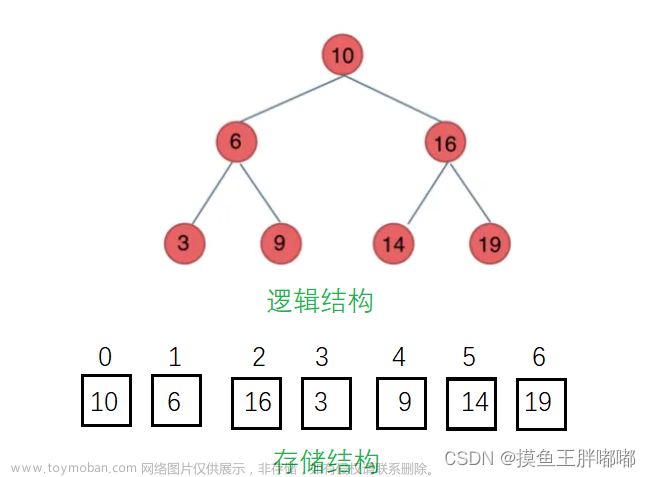一、双链表的概念
双向链表也叫双链表,是链表的一种,它的每个数据结点中都有两个指针,分别指向直接后继和直接前驱。所以,从双向链表中的任意一个结点开始,都可以很方便地访问它的前驱结点和后继结点。一般我们都构造双向循环链表。
二、双链表一些方法的实现
2.1 双链表的属性
class ListNode {
public int val;
public ListNode prev;
public ListNode next;
public ListNode(int val) {
this.val = val;
}
}
public class MyLinkedList {
public ListNode head;//指向双向链表的头节点
public ListNode last;//指向的是尾巴结点
}
2.2 打印双链表
打印双链表非常简单,只需要单独创一个结点cur来遍历链表并打印
//打印双向链表
public void display() {
//和单链表的打印方式是一样的
ListNode cur = this.head;
while (cur != null) {
System.out.print(cur.val + " ");
cur = cur.next;
}
System.out.println();
}
2.3 得到双链表的长度
单独创一个结点cur来遍历链表同时创一个count计数器来计算长度即可
//得到双链表的长度
public int size() {
ListNode cur = this.head;
int count = 0;
while (cur != null) {
count++;
cur = cur.next;
}
return count;
}
2.4 查找是否包含关键字key是否在双链表中
单独创一个结点cur来遍历链表并且判断是否包含key
//查找是否包含关键字key是否在双链表中
public boolean contains(int key) {
ListNode cur = this.head;
while (cur != null) {
if (cur.val == key) {
return true;
}
cur = cur.next;
}
return false;
}
2.5 头插法
当我们想把新的结点插入到第一个结点位置处,可以先建立一个结点,然后把头结点的prev变为我们新建立结点的next值,然后将我们新建立的结点值变为null,最后将头结点指向新的插入的结点。
注意我们需要首先判断这个链表是否为空,假如为空就直接构建链表即可
//头插法
public void addFirst(int data) {
ListNode node = new ListNode(data);
if (this.head == null) {
this.head = node;
this.last = node;
} else {
node.next = this.head;
head.prev = node;
this.head = node;
}
}
2.6 尾插法
尾插法顾名思义就是从结尾插入新的结点,这个和头插法过程差不多,只不过一个是改变head的位置,一个是改变last的位置。
和头插法一样,这个同样需要判断链表是否初始为空
//尾插法
public void addLast(int data) {
ListNode node = new ListNode(data);
if (this.head == null) {
this.head = node;
this.last = node;
} else {
this.last.next = node;
node.prev = this.last;
this.last = node;
}
}
2.7 任意位置插入,第一个数据结点为0号下标
首先要考虑,插入的位置是头部或尾部或中间。根据具体的位置实现具体的操作。
如果是头部,直接调用头插,如果是尾部,就直接调用尾插即可。
如果是中间插的的话:

1.node.next = cur.prev.next;
2.cur.prev.next = node;
3.node.prev = cur.prev;
4.cur.prev = node;
public ListNode searchIndex(int index) {
ListNode cur = this.head;
while (index != 0) {
cur = cur.next;
index--;
}
return cur;
}
//任意位置插入,第一个数据结点为0号下标
public void addIndex(int index, int data) {
ListNode node = new ListNode(data);
if (index < 0 || index >size()) {
System.out.println("index位置不合法!");
return;
}
if (index == 0) {
addFirst(data);
return;
}
if (index == size()) {
addLast(data);
return;
}
ListNode cur = searchIndex(index);
node.next = cur.prev.next;
cur.prev.next = node;
node.prev = cur.prev;
cur.prev = node;
}
2.8 删除第一次出现为key的结点
假如是头结点的话我们还需要判断这个链表是否只有一个结点,如果是那么last指针也会为空,head指针也会为空,否则,我们只移动头指针结点就可以
当删除中间结点的时候我们可以先找到对于位置的结点cur,利用对应位置的cur.prev和cur.next确定附近两个结点,然后进行删除即可,这个删除与链表相似,只是多了一个删除头结点而已。文章来源:https://www.toymoban.com/news/detail-834811.html
//删除第一次出现为key的结点
public void remove(int key) {
ListNode cur = this.head;
while (cur != null) {
if (cur.val == key) {
if (cur == head) {
this.head = this.head.next;
if (this.head != null) {
this.head.prev = null;
} else {
this.last = null;
}
} else {
cur.prev.next = cur.next;
if (cur.next != null) {
cur.next.prev = cur.prev;
} else {
this.last = this.last.prev;
}
}
return;
}
cur = cur.next;
}
}
2.9 删除所有key的值
//删除所有key的值
public void removeAllKey(int key) {
ListNode cur = this.head;
while (cur != null) {
if (cur.val == key) {
if (cur == head) {
this.head = this.head.next;
if (this.head != null) {
this.head.prev = null;
} else {
this.last = null;
}
} else {
cur.prev.next = cur.next;
if (cur.next != null) {
cur.next.prev = cur.prev;
} else {
this.last = this.last.prev;
}
}
}
cur = cur.next;
}
}
2.10 清空双链表
//清空双链表
public void clear() {
while (this.head != null) {
ListNode curNext = head.next;
this.head.next = null;
this.head.prev = null;
this.head = curNext;
}
last = null;
}
三、MyLinkedList.java
class ListNode {
public int val;
public ListNode prev;
public ListNode next;
public ListNode(int val) {
this.val = val;
}
}
public class MyLinkedList {
public ListNode head;//指向双向链表的头节点
public ListNode last;//指向的是尾巴结点
//打印双向链表
public void display() {
//和单链表的打印方式是一样的
ListNode cur = this.head;
while (cur != null) {
System.out.print(cur.val + " ");
cur = cur.next;
}
System.out.println();
}
//得到双链表的长度
public int size() {
ListNode cur = this.head;
int count = 0;
while (cur != null) {
count++;
cur = cur.next;
}
return count;
}
//查找是否包含关键字key是否在双链表中
public boolean contains(int key) {
ListNode cur = this.head;
while (cur != null) {
if (cur.val == key) {
return true;
}
cur = cur.next;
}
return false;
}
//头插法
public void addFirst(int data) {
ListNode node = new ListNode(data);
if (this.head == null) {
this.head = node;
this.last = node;
} else {
node.next = this.head;
head.prev = node;
this.head = node;
}
}
//尾插法
public void addLast(int data) {
ListNode node = new ListNode(data);
if (this.head == null) {
this.head = node;
this.last = node;
} else {
this.last.next = node;
node.prev = this.last;
this.last = node;
}
}
public ListNode searchIndex(int index) {
ListNode cur = this.head;
while (index != 0) {
cur = cur.next;
index--;
}
return cur;
}
//任意位置插入,第一个数据结点为0号下标
public void addIndex(int index, int data) {
ListNode node = new ListNode(data);
if (index < 0 || index >size()) {
System.out.println("index位置不合法!");
return;
}
if (index == 0) {
addFirst(data);
return;
}
if (index == size()) {
addLast(data);
return;
}
ListNode cur = searchIndex(index);
node.next = cur.prev.next;
cur.prev.next = node;
node.prev = cur.prev;
cur.prev = node;
}
//删除第一次出现为key的结点
public void remove(int key) {
ListNode cur = this.head;
while (cur != null) {
if (cur.val == key) {
if (cur == head) {
this.head = this.head.next;
if (this.head != null) {
this.head.prev = null;
} else {
this.last = null;
}
} else {
cur.prev.next = cur.next;
if (cur.next != null) {
cur.next.prev = cur.prev;
} else {
this.last = this.last.prev;
}
}
return;
}
cur = cur.next;
}
}
//删除所有key的值
public void removeAllKey(int key) {
ListNode cur = this.head;
while (cur != null) {
if (cur.val == key) {
if (cur == head) {
this.head = this.head.next;
if (this.head != null) {
this.head.prev = null;
} else {
this.last = null;
}
} else {
cur.prev.next = cur.next;
if (cur.next != null) {
cur.next.prev = cur.prev;
} else {
this.last = this.last.prev;
}
}
}
cur = cur.next;
}
}
//清空双链表
public void clear() {
while (this.head != null) {
ListNode curNext = head.next;
this.head.next = null;
this.head.prev = null;
this.head = curNext;
}
last = null;
}
}
四、Test.java
public class Test {
public static void main(String[] args) {
MyLinkedList myLinkedList = new MyLinkedList();
myLinkedList.addFirst(1);
myLinkedList.addFirst(2);
myLinkedList.addFirst(3);
myLinkedList.addFirst(4);
System.out.println(myLinkedList.size());
myLinkedList.display();
System.out.println(myLinkedList.contains(1));
myLinkedList.addLast(1);
myLinkedList.addLast(2);
myLinkedList.addLast(3);
myLinkedList.addLast(4);
myLinkedList.display();
myLinkedList.remove(1);
myLinkedList.display();
myLinkedList.removeAllKey(4);
myLinkedList.display();
myLinkedList.addIndex(0,99);
myLinkedList.display();
myLinkedList.clear();
myLinkedList.display();
}
}
五、效果展示
 文章来源地址https://www.toymoban.com/news/detail-834811.html
文章来源地址https://www.toymoban.com/news/detail-834811.html
到了这里,关于【一起学数据结构与算法】Java实现双链表的文章就介绍完了。如果您还想了解更多内容,请在右上角搜索TOY模板网以前的文章或继续浏览下面的相关文章,希望大家以后多多支持TOY模板网!







![[C语言][数据结构][链表] 双链表的从零实现!](https://imgs.yssmx.com/Uploads/2024/04/854886-1.png)






